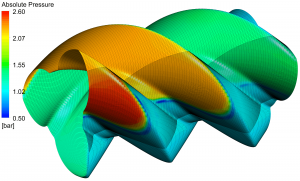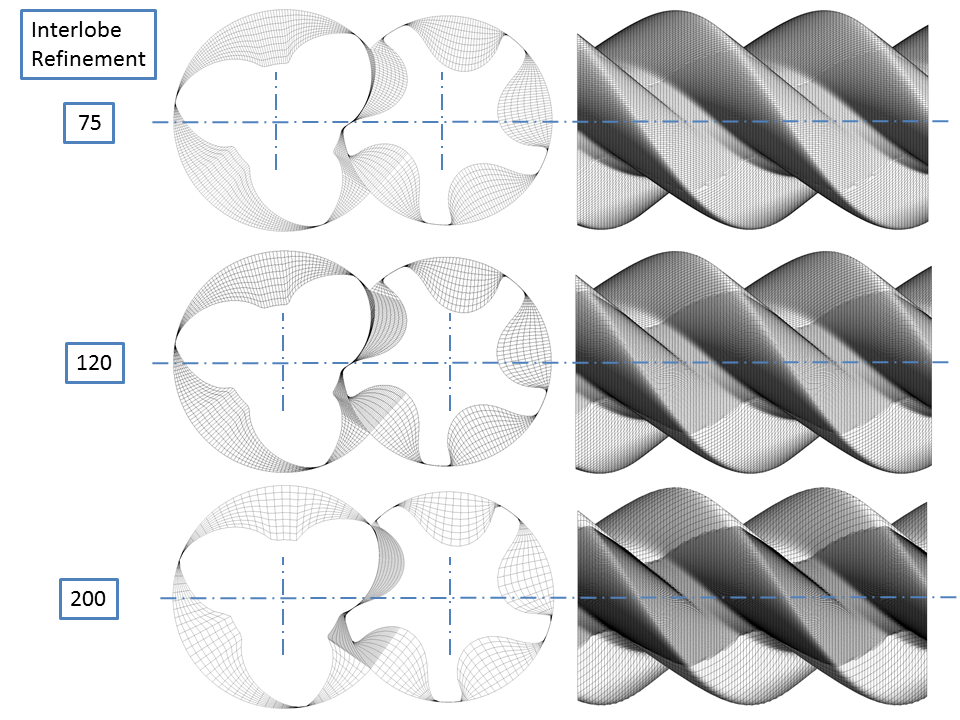


One of the major factors affecting the performance prediction of twin screw compressors using computational fluid dynamics is the accuracy with which the discretisation methods capture the leakage gaps. Therefore, particular attention needs to be dedicated to the interlobe rotor region.
One of the methods of improving the profile accuracy is by increasing the number of grid points on the profile. However, this method faces limitations in the complex deforming computational domain of the twin-screw compressor because the grid quality deteriorates and computational time increases tremendously.
To address this problem, an analytical grid distribution procedure that can independently refine the region of high importance, i.e. the interlobe space, has been developed in SCORG. This function uses the equidistant distribution of points on the outer computational domain, which consists of the casing and rack, to calculate distribution on rotors. This means it is possible to refine the mesh in the interlobe gap to allow for a more accurate prediction of leakage flows and reduce the number of computational cells in other regions. In addition, the total grid size can be controlled by limiting the number of cells in the region not containing interlobe gap and blow-hole areas.
The new grid has a regular cell structure with all quadrilateral cells and improved orthogonality.
The non-conformal interface between the rotors was resolved precisely with the interlobe grid refinement.
The pressure results showed a minimal difference between the original grid and the new grid, and the internal pressure rise agreed well with the experimental measurement.
Indicated power increased by a small amount and was close to the experimental value at all speeds.
There was a significant influence of interlobe grid refinement on predicting mass flow rate and hence leakage flows. With refined interlobe space, the error between experimental and calculated flow rate reduced significantly.
For more details, please contact us.